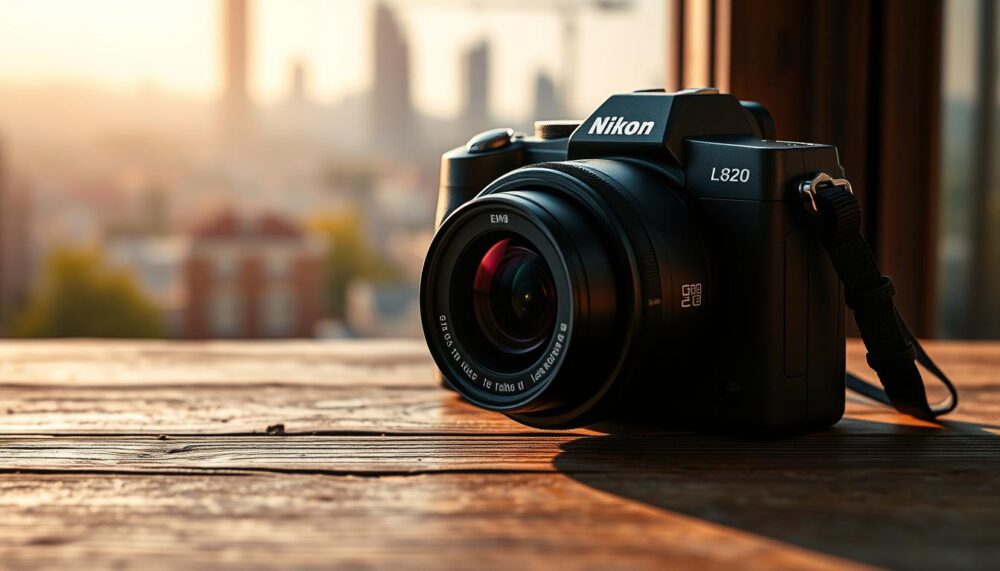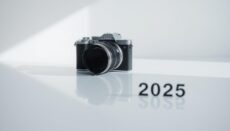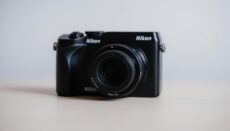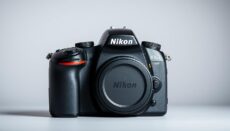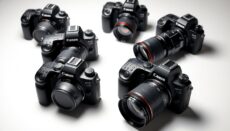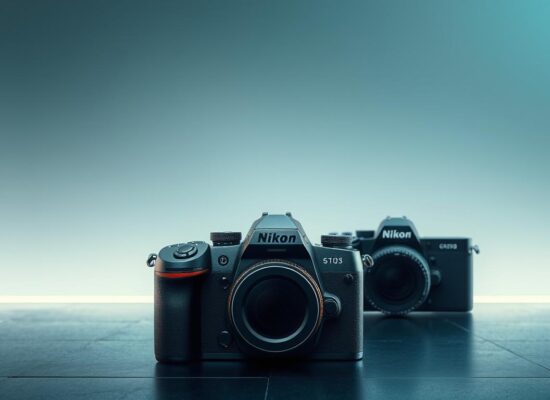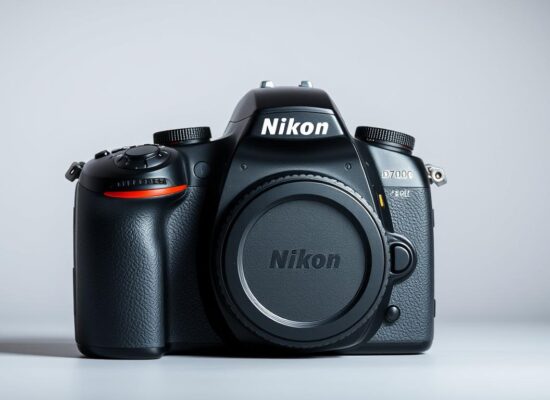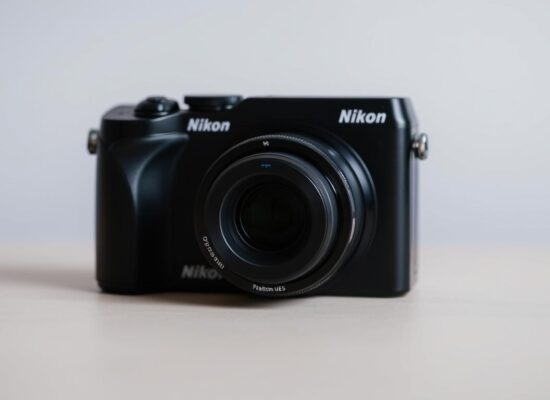For travellers seeking versatility without bulky gear, this budget-friendly option packs a punch. Its 30x optical zoom brings distant landscapes into sharp focus, while the 16MP BSI-CMOS sensor handles low-light scenes better than older models.
AA battery compatibility stands out for adventurers. No hunting for rare power sockets—just swap in fresh batteries. Full HD video recording and a compact bridge-style design add to its travel-ready appeal.
Priced under £200, it competes well with rivals like the Canon PowerShot SX510 HS. Ideal for casual shooters who want simplicity without sacrificing range.
Key Takeaways
- Offers a powerful 30x zoom for capturing distant subjects
- Uses AA batteries, convenient for off-grid trips
- Records 1080p video in a lightweight body
- Affordable alternative to complex DSLRs
- Improved low-light performance over previous versions
Nikon Coolpix L820 Overview: A Travel-Friendly Superzoom?
With a 30x zoom packed into a modest frame, this superzoom bridges the gap between portability and performance. Measuring 111x76x84.5mm, the Coolpix L820 matches its predecessor’s footprint while adding refinements for travellers.
Key specifications at a glance
The zoom lens stretches from 22.5mm wide-angle to 675mm telephoto, ideal for landscapes and distant subjects. A 16MP sensor ensures crisp details, even in dim light. Weighing 17oz (with batteries), it’s light enough for all-day carry.
Unique among rivals, AA batteries power the camera—no hunting for chargers. Expect 320–870 shots per set, depending on battery type. The 3-inch 921k-dot LCD remains bright in sunlight, a boon for outdoor shoots.
Design and build for on-the-go shooting
Glossy finishes in four colours mask a practical design. A deep grip and thumb rest improve handling, while the metal tripod mount adds durability. The secondary lens barrel zoom control lets you adjust framing swiftly.
Though slightly larger than Canon’s SX510 HS, the Coolpix L820 offers better stability. Its locking battery door prevents accidental spills, perfect for bumpy journeys.
Is the Nikon Coolpix L820 a Good Camera for Beginners?
Beginners need intuitive controls, and here’s how this option delivers. With 19 scene modes and instant playback edits, it’s tailored for those learning the ropes. The 0.2s startup time ensures you never miss candid moments.
Ease of use and auto modes
Easy Auto mode handles scene detection, so novices focus on framing. Smart Portrait adds smile and blink detection, perfect for family snaps. Guided playback helps tweak shots post-capture—no manual fiddling required.
Handling and ergonomics
Dual zoom rockers and a dedicated video button streamline operation. However, protruding buttons occasionally trigger macro mode accidentally. The grip design offsets this, offering stability during shots.
- Quick-start: Ready before you lift the viewfinder.
- Scene versatility: From sunsets to snow, presets adapt.
- Exposure compensation: A gentle intro to manual tweaks.
While advanced users might crave more control, beginners benefit from its simplicity. Just pack spare AAs for extended shoots.
Zoom Capabilities: How Does the 30x Lens Perform?
Stretching from sweeping landscapes to distant wildlife, the 30x zoom transforms ordinary shots into dramatic captures. Its 22.5–675mm range handles everything from group photos to safari close-ups, though edge softness appears at the widest setting.
Wide-angle to telephoto versatility
The lens shines in travel scenarios. At 22.5mm, it captures bustling markets comfortably, albeit with slight corner blur. Zoomed fully, 675mm brings far-off subjects like wildlife into crisp detail—tested effectively in Kenya’s Maasai Mara.
Compared to Canon’s 24–720mm lens, this offers a wider starting point but less extreme reach. The f/3–5.8 aperture means light gathering drops at full zoom, requiring brighter conditions for optimal performance.
Vibration reduction for steady shots
Hybrid VR combines optical and digital stabilisation, achieving 4-stop effectiveness. Handheld shots at 1/50s remained usable during testing, even at maximum zoom. For smoother video, use the lens barrel control instead of the rocker switch.
Key handling tips:
- Brace against surfaces when zoomed beyond 20x
- Enable Active mode for walking videos
- Prioritise shutter speeds above 1/100s in low light
Image Quality: Sharpness, Colour, and Detail
From golden-hour landscapes to bustling street scenes, image quality defines a travel camera’s worth. The 16MP BSI-CMOS sensor balances detail and speed, producing 5–6.6MB files at full resolution—enough for crisp A4 prints or cropping flexibility.
Daylight performance and dynamic range
Between ISO 125–400, photos retain sharp textures, even in foliage or brickwork. Nikon’s D-Lighting subtly lifts shadows in high-contrast scenes, though highlights may clip in direct sunlight. Compared to Fujifilm’s CCD alternatives, colours skew natural rather than oversaturated—ideal for realistic travel albums.
Handling flaws: Aberrations and edges
Minimal chromatic fringing appears in backlit shots, a win for a budget zoom lens. However, corners soften slightly at 22.5mm, noticeable in architectural images. Pixel-peeping reveals mild smudging in fine details, but social media shares hide this well.
“For its class, the sensor outperforms rivals in colour consistency, though dynamic range trails premium compacts.”
Key takeaways for travellers:
- Daylight clarity: Best between ISO 125–400; ideal for sunny destinations.
- Colour profiles: Natural tones suit landscapes, while rivals may exaggerate blues and greens.
- File sizes: Manageable for storage, yet detailed enough for light editing.
Low-Light and High-ISO Performance
Dimly lit scenes test any compact camera’s true capabilities. The Coolpix L820 manages respectable results up to ISO 800, though colour accuracy suffers beyond this point. Below ISO 400, images retain usable detail for social sharing or small prints.
Managing noise and sensitivity trade-offs
Greenish noise becomes noticeable at ISO 400+, particularly in shadows. By ISO 1600, muddy colours and smudged textures limit output to emergency shots. The sensitivity sweet spot lies between ISO 125–400 for travel snaps.
Flash and night shooting solutions
Built-in flash works best at mid-zoom ranges—expect slight vignetting at 22.5mm. Slow Sync mode helps balance ambient and artificial light for night portraits. Hand-held Night mode automatically boosts ISO while leveraging hybrid stabilisation.
Key low-light strategies:
- Tripod pairing: Use 4-second Fireworks mode for static scenes
- Flash recycling: Allow 5–7 seconds between bursts for full power
- Canon comparison: SX510 HS shows less noise at ISO 800 but slower recovery
“Hybrid VR stabilisation makes handheld twilight shots viable, though a mini tripod improves consistency.”
Video Features: Capturing Travel Memories in Motion
Capturing smooth, vibrant footage while travelling requires capable video features in a compact package. The Coolpix L820 delivers 1080p Full HD recording at 30fps, balancing resolution and file manageability for on-the-go creators.
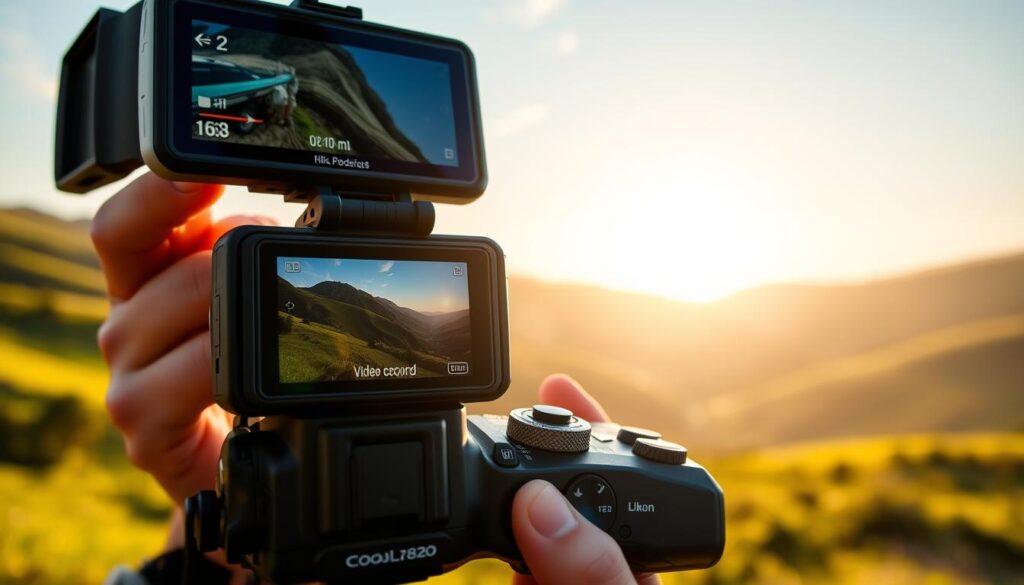
1080p Full HD quality and stabilisation
Electronic Vibration Reduction (VR) combats shaky handheld movies, though walking shots benefit from bracing against surfaces. The 3-inch LCD stays visible in sunlight, aiding framing during bright adventures.
Files average 73MB for a 38-second clip—compact enough for extended trips. Compared to 4K rivals like Panasonic’s travel zooms, the bit rate prioritises storage efficiency over ultra-high detail.
Audio and zoom performance during recording
The zoom motor’s whirr sometimes intrudes in quiet scenes, but a wind noise filter minimises ambient disruption. Variable-speed zoom control ensures smooth transitions, though rapid adjustments may jar the audio.
For dynamic sequences, 120fps slow-motion at 640×480 adds creative flair. Just note the 35-minute clip limit—ideal for snippets rather than lengthy documentaries.
“Hybrid stabilisation handles casual walk-and-film scenarios well, but a mini tripod elevates static shots.”
Key takeaways for travellers:
- Stabilisation: Effective for strolls, but brace for jogging or windy conditions.
- Audio trade-offs: Built-in mics pick up handling noise; an external recorder helps for interviews.
- Zoom precision: Barrel control offers smoother adjustments than the rocker switch.
Battery Life and Portability
Powering adventures without fuss, this camera’s AA battery system offers flexibility for remote destinations. Unlike USB-dependent rivals, it thrives where power outlets are scarce—think safari lodges or mountain trails.
AA batteries: Convenience meets compromise
Alkaline AAs deliver 320 shots, while lithium variants stretch to 870—ideal for full-day excursions. Rechargeable NiMH options strike a balance, offering 540 shots per charge. No in-camera charging means packing spares, but compatibility with the EH-67 AC adapter adds versatility.
| Battery Type | Shots per Set | Best For |
|---|---|---|
| Alkaline | 320 | Backup/emergencies |
| NiMH | 540 | Eco-conscious travellers |
| Lithium | 870 | Extended off-grid trips |
Travel-friendly heft and proportions
At 17oz (with batteries), it’s slightly heavier than lithium-powered rivals like the Canon SX510 HS (13oz). However, the 84.5mm depth with retracted lens fits snugly in daypacks. The metal tripod mount adds durability without bulk.
- Weight trade-off: Heavier than USB-charged models but avoids adapter hassles.
- Packing tip: Store lithium AAs in carry-ons for cold-weather reliability.
- Real-world test: Lasted a half-day Maasai Mara shoot on one lithium set.
“For off-grid travel, AA compatibility outweighs the slight weight penalty—just budget for rechargeables to cut long-term costs.”
Nikon Coolpix L820 vs. Competitors
Budget-conscious travellers often face a dilemma: extended zoom or everyday convenience? The Coolpix L820 carves its niche with AA battery flexibility, but rivals like Canon’s PowerShot SX510 HS counter with longer reach. Here’s how they stack up for globetrotters.
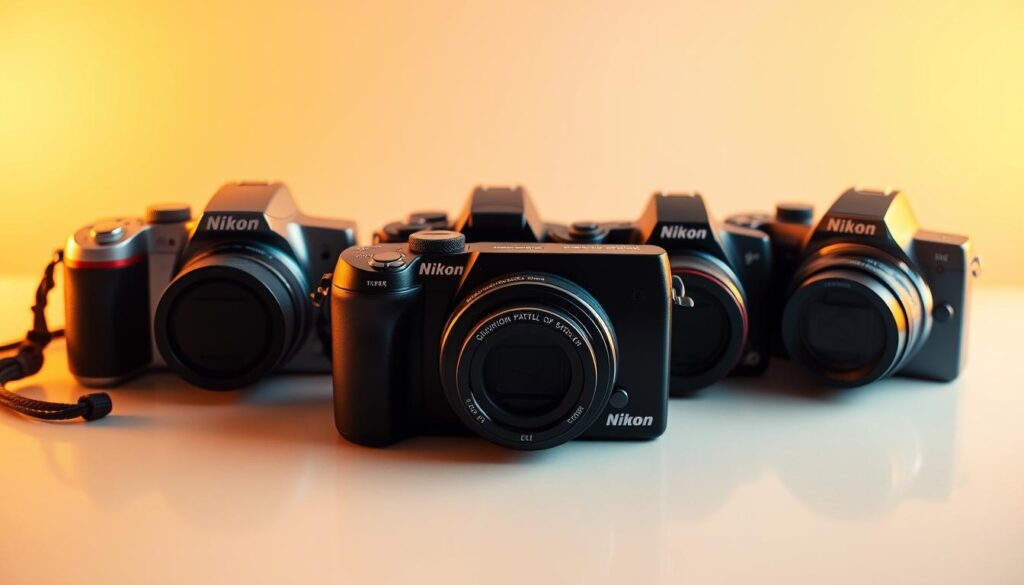
Canon PowerShot SX510 HS: Zoom vs Practicality
Canon’s 720mm telephoto outpaces the L820’s 675mm, ideal for safari enthusiasts. However, its lithium-ion battery demands chargers—a hassle in remote areas. Both cameras share 1080p video, but Nikon’s secondary zoom control offers smoother transitions.
| Feature | Coolpix L820 | SX510 HS |
|---|---|---|
| Zoom Range | 22.5–675mm | 24–720mm |
| Battery | AA (320–870 shots) | Lithium-ion (250 shots) |
| Weight | 482g | 349g |
Fujifilm and Panasonic: Price Versus Modes
Fujifilm’s FinePix S1 boasts weather sealing at £100 more, while Panasonic’s FZ62 offers manual modes for enthusiasts. The Coolpix L820 undercuts both on price, appealing to those prioritising simplicity over specialised options.
- Fujifilm S1: Weatherproof but heavier (680g)
- Panasonic FZ62: 24x zoom with RAW support
- Nikon’s edge: Metal tripod mount, thumb-operated zoom
“For off-grid trips, AA compatibility outweighs marginal zoom gains—unless you’re exclusively shooting distant wildlife.”
Missing weather sealing may deter rainforest explorers, but urban travellers benefit from the L820’s lighter kit. At £220, it splits the difference between basic compacts and premium superzooms.
Conclusion: Should You Buy the Nikon Coolpix L820 for Travel?
Balancing zoom power with simplicity, this model suits casual explorers best. Its 30x optical range captures distant landmarks effortlessly, while AA batteries keep it running off-grid. Daylight shots impress, earning praise from ephotozine for vibrant colours.
Compromises exist—low-light performance falters, and the plasticky shell lacks premium feel. Yet for under £200, it delivers solid value for money. CNET notes its reliability in bright conditions, ideal for sunny getaways.
Consider alternatives if manual controls matter. But for hassle-free travel photography, the Coolpix L820 remains a practical pick. Pack spare batteries, embrace its lightweight design, and focus on adventure over pixel perfection.
FAQ
Is the Nikon Coolpix L820 suitable for travel photography?
Yes, its compact size, 30x zoom lens, and Full HD video make it a solid choice for capturing landscapes, portraits, and distant subjects while travelling.
How does the 16MP BSI-CMOS sensor perform in different lighting?
The back-illuminated sensor delivers decent sharpness and colour in daylight, though noise becomes noticeable above ISO 800 in low light.
What’s the battery life like with AA batteries?
Using four AA lithium batteries, you’ll get around 320 shots—handy for travel but consider spares for extended use.
Does the 30x zoom lens maintain image quality at full reach?
While the zoom is impressive, slight softness and chromatic aberrations appear at maximum telephoto—vibration reduction helps stabilise handheld shots.
Can beginners use this model easily?
Absolutely. Auto mode, scene selections, and straightforward controls make it accessible for those new to photography.
How does it compare to rivals like the Canon PowerShot SX510 HS?
The L820 offers a longer zoom and slightly better ergonomics, though the Canon has a more compact design and faster autofocus.
Is the 1080p video quality good for travel vlogging?
Video is crisp with stabilisation, but zoom noise and average audio may require external mics for professional results.
Are there creative shooting modes?
Yes, including panorama, night landscape, and special effects like selective colour—great for adding variety to travel shots.

